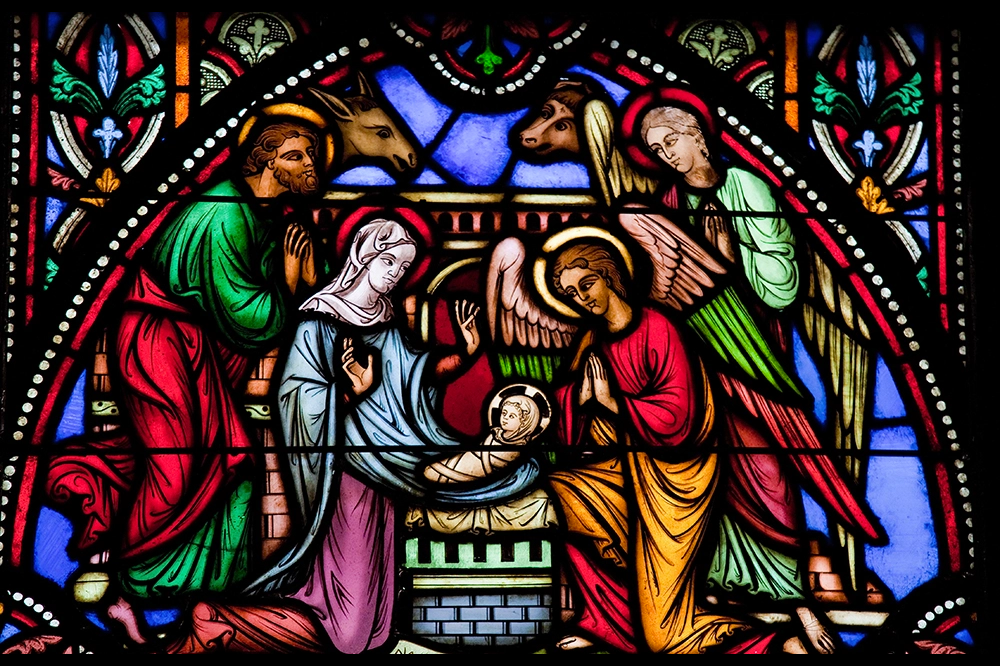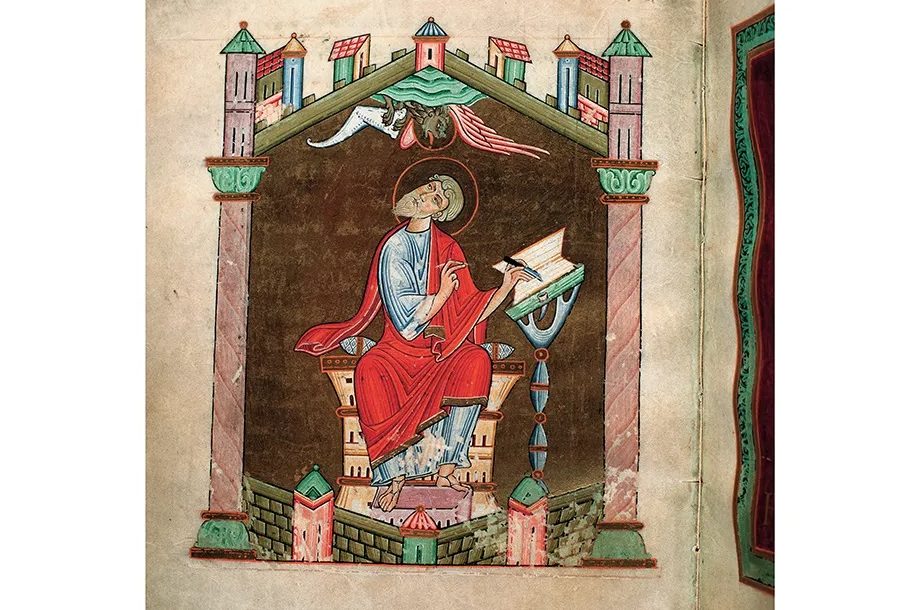Since I gave birth four years ago and then, too soon afterwards, two years later, I have deliberately become a sponge for other women’s experiences of childbirth and raising babies. I found the whole process almost unbearably difficult, and I was baffled that other women didn’t seem to be walking around sharing their birth stories with strangers in the way I was.
During Christmas 2020, amid the fog of sleep deprivation, lockdown blues and postnatal depression, I began imagining Mary giving birth in a stable with only Joseph for a midwife. I also imagined other children running around, because my two-year-old daughter was doing just that — running around shrieking, demanding to be read a story while I tried to feed her baby brother and hide my tears from them both.
Did Mary have other children? Did she feel stretched, pulled in opposite directions by the needs of more than one child? That’s how I felt when I had my second. The immediate post-birth elation was dampened the second time around by worries of how my eldest would take to the new arrival. I was fixated on the possibility (soon to be a reality) that my daughter would not happily share my attention with her new brother. Of course that wouldn’t always be the case — my two are now fast friends — but try telling that to a woman who’s just lost a bottle of wine’s worth of blood delivering a 9lb baby.
Before I had children I hadn’t even thought about Jesus as a brother, yet all four gospels and Paul mention Jesus’s brothers, sometimes by name, and Matthew and Mark refer to sisters. Matthew 13:55 names James, Simon, Joseph and Judas, the sons of Mary and Joseph the carpenter. The gospels often describe Jesus going from place to place with his mother and brothers. One brother is named regularly and was so significant a disciple that he became an early church leader. James “the Just” or “the Righteous” is often known today as “James the Lesser,” compared with the more famous disciple “James the Great” (son of Zebedee). One would have thought that James, the Lord’s brother and the first bishop of the church of Jerusalem, would be given precedence over all other Jameses. And yet James the Just, Jesus’s brother, has been sidelined. Why?
Professor John Painter, an Australian theologian and champion of James the Just, argues that he is “central in certain traditions but at some point these traditions ceased to be influential.” Peter brought the gospels to Rome and became the central figure in the Roman church. But it was James who was elected, probably by Peter and the other elders, as the first leader of the Jerusalem church. There is a mural in the crypt of the Benedictine Dormition Abbey in Jerusalem which depicts the Holy Family’s flight into Egypt. Mary rides on an ass with the baby Jesus on her lap. An elderly Joseph walks behind. In front, leading the donkey, is a very young man or boy — James, Jesus’s brother. The Benedictine mural derives from the Epiphanius school of thought, which holds that Joseph was married before Mary, and that James is Joseph’s son and Mary’s stepson. In later centuries Joseph has often been depicted as an old man simply to explain the presence of another older son.
Jesus’s brother James is also sidelined by the writer of Acts (strongly held to be Luke). Despite James’s prominence in the founding of the early Church, Luke mentions him on only three occasions (Acts 12:17, 15:13, 21:18). The reason for James’s diminished role is probably to do with his position on circumcision. He was a firm believer in the ancient Jewish “token of the covenant” and thought people like Paul were dangerously lax. Luke, while not wholly agreeing with Paul’s rejection of circumcision, wished to diverge from James’s hardline approach. Luke may even have known of James’s martyrdom in AD 62 but chose not to mention it. James gets a word in himself in the New Testament canon — his epistle follows Paul’s and precedes Peter’s — though it is rather dour: “Go to now, ye rich men, weep and howl for your miseries that shall come upon you.”
What about Jesus’s sisters? The context in which they are mentioned hints at the tension Jesus felt between his home life and the mission he had embarked upon. When Jesus goes home to Nazareth to speak, the locals mock and rebuff his message. “Isn’t this the carpenter’s son?” they say. “Isn’t His mother’s name Mary, and aren’t His brothers James, Joseph, Simon and Judas? And his sisters, are they not all with us? Whence then hath this man all these things?” Jesus’s reply indicates his struggle to reconcile his human life with the mission God had given him: “Only in his hometown and in his own household is a prophet without honor,” he says, “and he did not do many more miracles there.” The fact that the locals knew Jesus’s family meant that they could not believe Jesus to be the Messiah.
Is this perhaps why we know so little, talk so little about Jesus’s siblings? Despite their presence in all four gospels, church fathers such as St. Jerome claim Jesus’s brothers and sisters were actually his cousins. Professor Painter believes that, in writing Jesus’s story, Matthew and Luke realized they needed to set him apart from his immediate family to emphasize the miracle of the virgin birth. Early church leaders fixated on Mary and Joseph’s virginity, some even claiming both perpetually abstained. The part of Jesus’s story that’s been sacrificed is his immediate family, the people who helped form his character. The need to promote the virgin birth narrative took priority. We’ve lost the stories of his brothers and sisters, and the story of Mary as a mother and Joseph as a father to more than one child.
This Christmas, I will enjoy thinking about Jesus as a brother and how it must have felt to have been a brother or sister to this strange, exceptional boy. I will also think about Mary as the mother of at least seven children. She goes on to witness the death of one of her children at least — but did she also witness her son James’s death? He too died a martyr, thrown from a temple by the Pharisees and then beaten with a club. Was Mary there as well? Pity we’ll never know.
This article was originally published in The Spectator’s UK magazine. Subscribe to the World edition here.

























